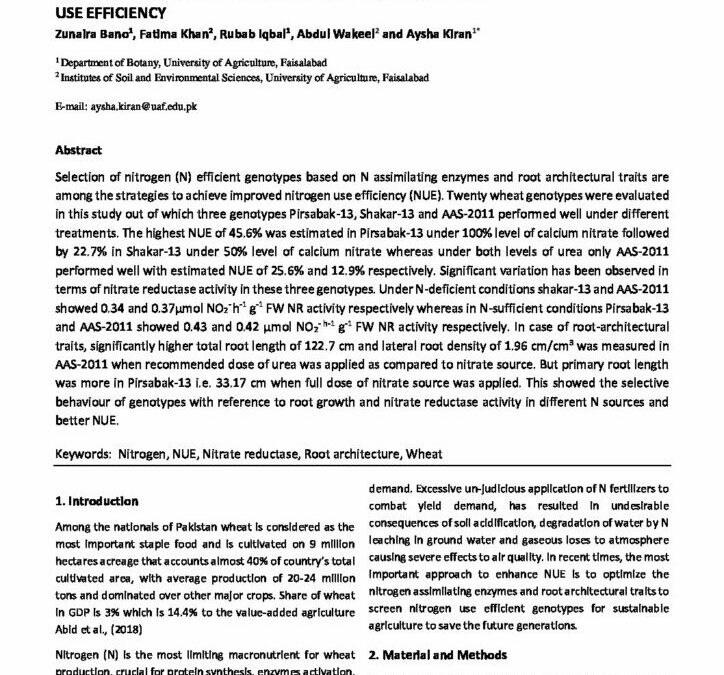Root system architecture variability and nitrate reductase activity in wheat genotypes for nitrogen use efficiency

Selection of nitrogen (N) efficient genotypes based on N assimilating enzymes and root architectural traits are among the strategies to achieve improved nitrogen use efficiency (NUE).
Twenty wheat genotypes were evaluated in this study out of which three genotypes Pirsabak-13, Shakar-13 and AAS-2011 performed well under different treatments. The highest NUE of 45.6% was estimated in Pirsabak-13 under 100% level of calcium nitrate followed by 22.7% in Shakar-13 under 50% level of calcium nitrate whereas under both levels of urea only AAS-2011 performed well with estimated NUE of 25.6% and 12.9% respectively. Significant variation has been observed in terms of nitrate reductase activity in these three genotypes. Under N-deficient conditions shakar-13 and AAS-2011 showed 0.34 and 0.37µmol NO2 – h -1 g -1 FW NR activity respectively whereas in N-sufficient conditions Pirsabak-13 and AAS-2011 showed 0.43 and 0.42 µmol NO2 – h-1 g -1 FW NR activity respectively. In case of root-architectural traits, significantly higher total root length of 122.7 cm and lateral root density of 1.96 cm/cm3 was measured in AAS-2011 when recommended dose of urea was applied as compared to nitrate source. But primary root length was more in Pirsabak-13 i.e. 33.17 cm when full dose of nitrate source was applied. This showed the selective behaviour of genotypes with reference to root growth and nitrate reductase activity in different N sources and better NUE.
